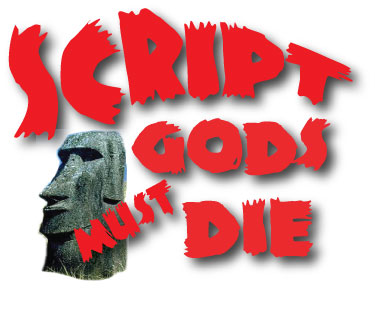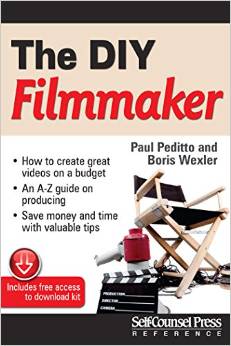*Dedicated to Rob Blagojevich, who just got sprung by you know who in the COVID Twilight Zone Year-To-Be-Flushed 2020…
Back on December 7, 2011 came this headline…

This year, came this headline…

Who cares about Blago and what’s it got to do with screenwriting?
Because today I’ve got a greatest movie scene that’s never been seen in a movie. It isn’t from a screenplay at all.
It’s a call from former Prisoner # 40892-424, current resident of Littleton, Colorado Federal Minimum Security prison, and former Governor of Illinois, Rod Blagojevich. On the other end is former Barack Obama Chief of Staff and former Mayor of Chicago Rahm Emanuel. Talk about ships that pass in the night! Years ago, a connection in law enforcement gave me a wiretap transcript between the current Ex-Governor of Illinois, Rod Blagojevich and the current Mayor of Chicago, Rahm Emanuel. If you want a real taste of Chicago political corruption.
Check out the transcript right here.
There’s even a YouTube video recreating the call. Skip to 00:30. It’s goofy and over the top but it captures the moment the genius ex-Gov Blago was busted for bribery, conducting pay-to-play right over his phone…
What else do you hear? F-bombs dropped as from two scotch-rocks Mamet salesmen. What else? Did you hear the repetition, the rhythms, and interruptions in that dialogue? How about the power dynamic? It’s pay-to-play politics, Chicago-style. This is verbal warfare. Both guys have agendas, they come in with wants and needs. Blago trying to, essentially, extort money for the Senate seat–trying to say that without saying it. Rahm takes the call out of courtesy but wants nothing to do with the Governor. Each tries to control the call. Thus, is born conflict.
In any scene that you draw, you should do several things. 1-The scene exists because it must. It advances character or plot. You know ahead of time what the scene is there for, what it must accomplish. Get into the scene late, accomplish what you have to accomplish, and get out.
The best way to accomplish what the scene must is to understand character motivation. What exactly do the characters want at this moment in the story? What do they want from each other? What will they do to get there?
A beat is the smallest actable moment. Every scene has beats. If the scene has two or more characters you need to figure out who owns the beat. Every scene, at its essence, is one character attempting to impose their will on the other…to control, manipulate, or dominate the other. Sometimes this is done with subtlety. Other times it’s done with Chicago-style politics and Mamet-esque f-bombs.
What do the characters want in this scene?
Here, Rod wants to get paid. Rahm, at the start, does not control the beat. Rod wants to get paid and pushes the notion of selling a Senate seat. From that point the beat shifts. Rahm now wants something too…he wants to get off the phone. He wants distance between himself and Rod. Rod doesn’t much care, pushing Rahm’s buttons. Rahm pushes back hard, the f-bombs start to drop. Two Type-A bull rams bashing each other. Who owns the beat in the end? Hard to say, both are attempting to control things, though Rahm might get the decision, ignoring Rod’s threats and hanging up the phone with: “Have a great life, Fatso!”
When you write your scripts remember that each scene must accomplish what it was intended to accomplish. Get in late, get out early, and make the scene do what it needs to do.
Within the context of the scene there are characters each of which needs or wants something. It is the battle for beat ownership that supplies any movie with much of its tension or comedy or horror.
This simple but important lesson on dialogue brought to you by the City of Chicago—and Chicago style politics!

Orson Wells once said: Everyone has their reasons. Understanding who and what drives a scene—and the dialogue within the scene—will go a long way toward making your movie ring true.
Can you “teach funny”? Can writing dialogue, comedic or dramatic, be “learned”? Second City—the Chicago comedy institution—might have a thing or two to say on this subject. Tens of thousands have gone through their schooling. From John Belushi to Stephen Colbert, their success stories are too numerous to mention. So the answer would be yes, right?
It’s not an irrelevant question to ask: If tens of thousands of people went through Second City improvisational teaching and hundreds now make their living at it: What about the thousands who are NOT making a living at it? They got the same training as the success stories, sooooo….? Not to get into the whole nature/nurture debate… I think we could agree that the theory of comedy can be taught; you can learn improvisation games, read endless books and become better by working the craft of comedy writing, but…how do I teach you, exactly, to be funny?
I sat in on a Comedy Guru’s traveling seminar a few months back. Among other lessons, he pointed out that comedy isn’t always Jack Black flailing arms and squealing as he chokes on a chocolate éclair. It’s the fact that his date doesn’t notice he’s in the process of croaking. In other words, the laugh is in her reaction. He then showed clips from Abbot and Costello to a David Cross skit that emphasized his point—yes, the laugh was in the reaction. Fine, got it, now what? He set up a writing exercise with a similar premise and had students write a 10-line scene. The seminar-folk wrote them and proceeded to read them. It’s being charitable to say they weren’t successful. Interestingly, he had given them the theory of it but, in the end: They still had to sit down and write the freakin’ scene! Alone!

If I can teach you to write comedy then I can teach you to write drama, the question is: Why do some people walk into the room Day 1 being able to write killer dialogue. Others give 1000%, work at it, work at it, and it never happens for them. Why?
If the craft of dialogue writing can be taught, what are some of things I’d recommend? How about starting with these:
Charlie Kaufman has two ears. So do Quentin Tarantino, Shane Black, Paul Haggis, and Diablo Cody—two ears. Here’s the good news: So do you. Writing dialogue is about hearing it. Write the scene. Now, read it. Does it sound natural? How can you tell? What I’m about to tell you is painful. You need to listen to people. On the subway, on the line at Target. What you’ll hear is that screenplay dialogue isn’t a regurgitation of real life speech. It’s a stylized recreation. Movie dialogue isn’t perfectly formed Noun/Verb sentences: It’s repetition, lost thoughts, rhythms, pacing, stuttering, political outlook, educational background, tension and release, subtext.
Good dialogue is imperfection. It works to fill the gap between character action and inner thought. It provides information that, for some reason, cannot find a visual solution. Dialogue serves story and character. Why are you in the scene? Can you say it without saying it—i.e.: find the visual solution. No? Fine, say it in dialogue. But find subtext. Don’t verbalize everything. Let the actor fill in the emotional gaps between words.Start by writing it, and then speak it back to yourself. Hear the words. Do you buy it? A cop talking about the trajectory of a bullet. An astronaut talking about a propulsion system. Not convincing? Write it again. Get specific. Write the same passage 10 times until it sounds passable. Then write it an 11th until it’s more than passable. Hear it.

Be a sponge. More good news: You’re on a subway, two people are talking and it’s…amazing. I mean genius. It’s ridiculous, demented, and sooo out there you could never have dreamed it up. Time to go into sponge mode. Drop everything and get the conversation down on paper. Can it be used for your screenplay? Unless they’re speaking a passage of an unpublished magnum opus, the words they just spoke—you just wrote them. Why do you own them? Because you recognized their genius, their divine absurdity. Truth is stranger than fiction. Write believable dialogue by tapping into real life conversations.
What, exactly, are you trying to say? I once went to a lecture by Judith Malina, co-founder of the Living Theater. You might know her as Grandmama in the original The Adams Family movie. She told us that, when beginning a project, she always asks herself: What is it I’m trying to say? Pretty basic thought, huh? How many of you do it though? Every scene you write, every line of dialogue, should move to say what you’re trying to say. If it’s a revenge tale, every Act 1 scene should set up the revenge, every Act 3 scene pays it off. Dialogue advances character or plot or it has no reason for being. But it should also have a thematic basis. Figure out what you need to say in the scene, say it, and get out.
The essence of you: What’s important? You, as God of the Realm, have a responsibility: A little piece of you should be in every character. How will that filter into dialogue? If what you write rings true to you, you stand a decent chance that the words will resonate with your audience. Example: If you had an abortion, and were writing a script where a character had to undergo a similar abortion experience, some piece of you would be in that scene. You could write it not just with authenticity but with an emotional POV that would strike a chord with audience members. Does the writer have to first-hand experience everything their characters do? Absolutely not. But you must come at dialogue with an understanding of what’s true to you.
Get those feelings into dialogue and the story will ring true.

